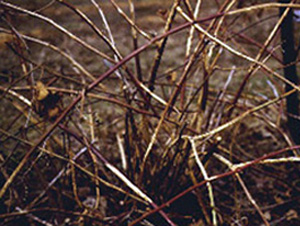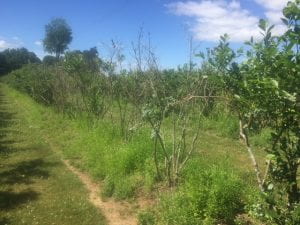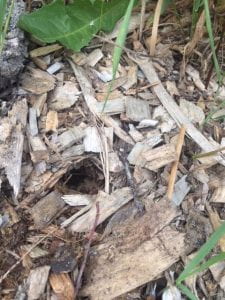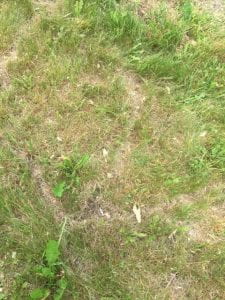Individual canes may be wilting, collapsing, dead, or turning brown.
Physical injuries to canes may be caused by:
These wounds may provide a point of entry for cane diseases such as Fusicoccum or Phomopsis Canker.
Farm machinery operation
Mechanical injuries frequently occur during farm machinery operation in blueberry plantings. These most commonly result from harvester operation, but may also occur during operation of other kinds of equipment such as mowers, tractors, or sprayers.
High winds
High winds may have a damaging effect on blueberry plantings, causing canes to be broken, as well as premature fruit and leaf drop.
Hail
Hail is damaging to blueberry canes, leaves, and fruit. Canes and/or smaller twigs may be broken or bent; bark may be broken or split.

Wildlife Feeding
Feeding by deer, rabbits, and voles causes physical damage to blueberries.
Deer
Deer typically browse off cane tips and buds. Feeding by deer may cause extensive damage to both younger and older plantings.

Bears
Bears will break canes and leave deep claw marks in the bark.


Rabbits
Rabbits eat cane tips at or above the snow line. They may also strip bark from canes above the snow line.


Voles
Voles attack blueberry plants underground, feeding on tender roots. The presence of voles can be deduced by the presence of vole trails and tunnels in the ground of a blueberry planting.





